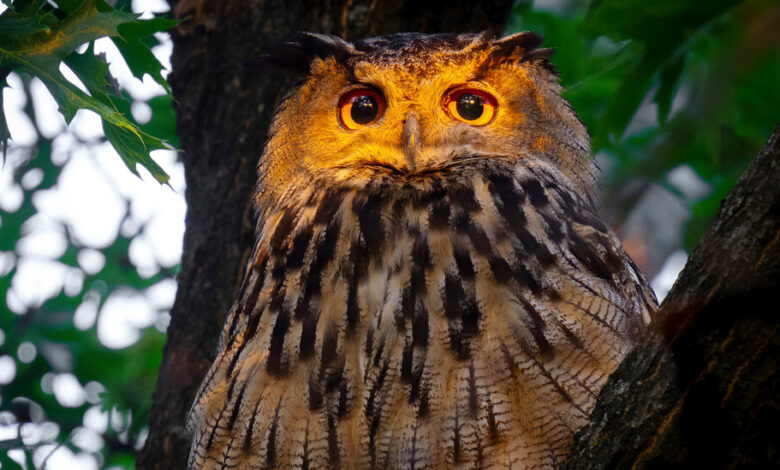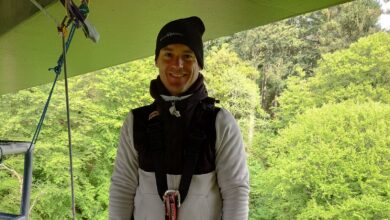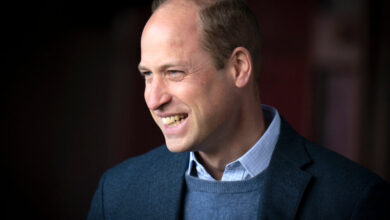New York Mourns Flaco, an Owl Who Inspired as He Made the City His Own

Pjetar Nikac has been the superintendent at 267 West 89th Street, an eight-story apartment building near Riverside Park, for 30 years. What happened there Friday made it a day he wouldn’t forget.
Mr. Nikac was returning from a trip to the store at around 5 p.m. when he noticed an object on the ground in the building’s courtyard space.
“I thought it was a rock,” he said. “I came closer and I saw: Owl.”
Mr. Nikac knew immediately that it was not just any owl, but Flaco, the Eurasian eagle-owl who just three weeks ago passed the one-year mark of living in the relative wilds of Manhattan after leaving the Central Park Zoo. Someone had cut open the mesh on his enclosure in an act of vandalism that remains unsolved.
Now, Flaco had apparently crashed into the building. Although he was still alive when Mr. Nikac found him and, with Alan Drogin, a birder and building resident, rushed to get him help, Flaco was soon pronounced dead. He was taken to the Bronx Zoo for a necropsy that will determine why he died.
So ended an improbable adventure for a large, fiery-eyed bird who captured the public’s attention in New York and beyond by showing he could thrive on his own, at least for a time, despite having lived nearly his entire life in captivity.
Flaco would have turned 14 next month. And while the hazards presented by the urban environment almost guaranteed an early death, his life as a free bird inspired a passionate following that was obvious in the widespread grief that greeted news of his demise.
In Central Park’s North Woods section on Saturday, mourners — some carrying flowers, others toting binoculars, a few pushing strollers — walked back and forth among some of Flaco’s favorite oak trees, searching for just the right spot to pay tribute in the chilly sunshine.
Offerings left beneath trees near the park’s East Drive included a furry owl doll, an owl carved from a block of wood, a pencil portrait of Flaco, letters and flowers. One letter bid Flaco farewell to “eternal flight.” Another thanked him for bringing “joy to the hearts of everyone who got to witness your magical journey.”
Breanne Delgado, 34, was among those in the park. She placed dried red roses at the base of an oak along the park’s East Drive and said she is writing a children’s book about Flaco, calling him a “muse.”
“I feel like he was showing us how we can break free out of our cages, the mundane, the things that don’t serve us, the things that hold us back,” Ms. Delgado said.
The owl was a muse to all kinds of artists. People got Flaco tattoos and wrote rap lyrics and poetry about him. A documentary film is in the works. The Colombian-born artist Calicho Arevalo, who has painted eight Flaco murals, started a new one on Saturday afternoon at Freeman Alley on the Lower East Side.
Alfonso Lozano, 36, had come to Central Park on Saturday with his wife, Sarah Buccarelli, and the couple’s 3-month-old daughter. Mr. Lozano said he had been miserable at his photography job when Flaco left the zoo last February.
That changed, he said, when he began to visit Flaco daily at one of the owl’s regular roosting spots, in Central Park’s ravine.
“He was my therapy,” Mr. Lozano said, adding that spending time around Flaco had inspired him to quit his job and start his own company.
“Flaco helped me to find freedom,” he said.
Originally from Spain, Mr. Lozano drew a connection between Flaco’s finding a way to survive in New York and his own experience as an immigrant in the city.
“Flaco means New York,” he said.
Lia Friedman, 33, a public-school teacher who lives in Manhattan’s Inwood section, said that following Flaco’s activities had introduced her to a new circle of friends. She said she would sit for hours at a time beneath an elm tree where Flaco often perched, chatting with those who stopped to photograph him, draw pictures of him or simply to tell him: “I love you.”
“He just seemed really magical, like living in a storybook version of New York,” she said.
Ms. Friedman understood that the threat of Flaco striking a building, colliding with a vehicle or ingesting a deadly amount of rodenticide was ubiquitous. She felt torn between wanting him to stay free and wanting him to be somewhere safer, perhaps a rural area upstate.
“I worried about him a lot,” she said.
Ruben Giron, 73, a registered nurse who lives on 112th Street, said he had wept Saturday morning when he heard the news.
“He’s a symbol of just enjoying being out and letting the sun hit you,” he said. “It’s a heart-opening experience of what it means to be free.”
He added: “We’re all figuring out how to live life. That’s what we’re doing, and he did it.”
Marianne Demarco, who lives at a West End Avenue building adjacent to the one Flaco struck, said she had first seen the owl surrounded by about 50 onlookers in Central Park. Little did she know that he would eventually make her building one of his regular hangouts.
“It was like having a little thing that you could take care of and protect,” Ms. Demarco, 50, said on Saturday, tears streaming down her face as she walked her pit bull around the block. She said she had met many of her neighbors in the building as a result of Flaco’s presence.
“It is a little like the end of — ” she paused “ — the end of a dream that we were all hoping to hold on to.”
Mr. Nikac, the superintendent, appreciated Flaco’s presence not least for its effect on the building’s rodent problem. “Since he came here, no rats,” he said.
He said he was not sure how exactly Flaco died, but that when he reviewed security footage from Friday evening, it briefly showed the bird falling, fast, and jostling the camera.
“He was so beautiful,” Mr. Nikac recalled.
Flaco’s New York sojourn was confined to Manhattan, but his fans were all over.
Megan Hertzig, 53, who lives in Brooklyn’s Prospect Heights section, was running with her dog in Prospect Park on Saturday. She said she had been following Flaco’s exploits and had mixed feelings about the act that freed him.
“On one hand, I’m happy that he was free because he was in too small of a confinement,” she said. “But to set him free in a situation where he couldn’t survive necessarily makes me really unhappy.”
Interviewed last month, Scott Weidensaul, the author of the Peterson Reference Guide to Owls, expressed similar regret about the position Flaco had been put into and echoed the opinion of other bird experts that it was “just a matter of time before something bad happens.”
On Saturday, Mr. Weidensaul said via email that he took no pleasure in hearing that Flaco had died.
“Sometimes,” he said, “it sucks to be right.”
Anusha Bayya, Nate Schweber, Olivia Bensimon and Gaya Gupta contributed reporting.




